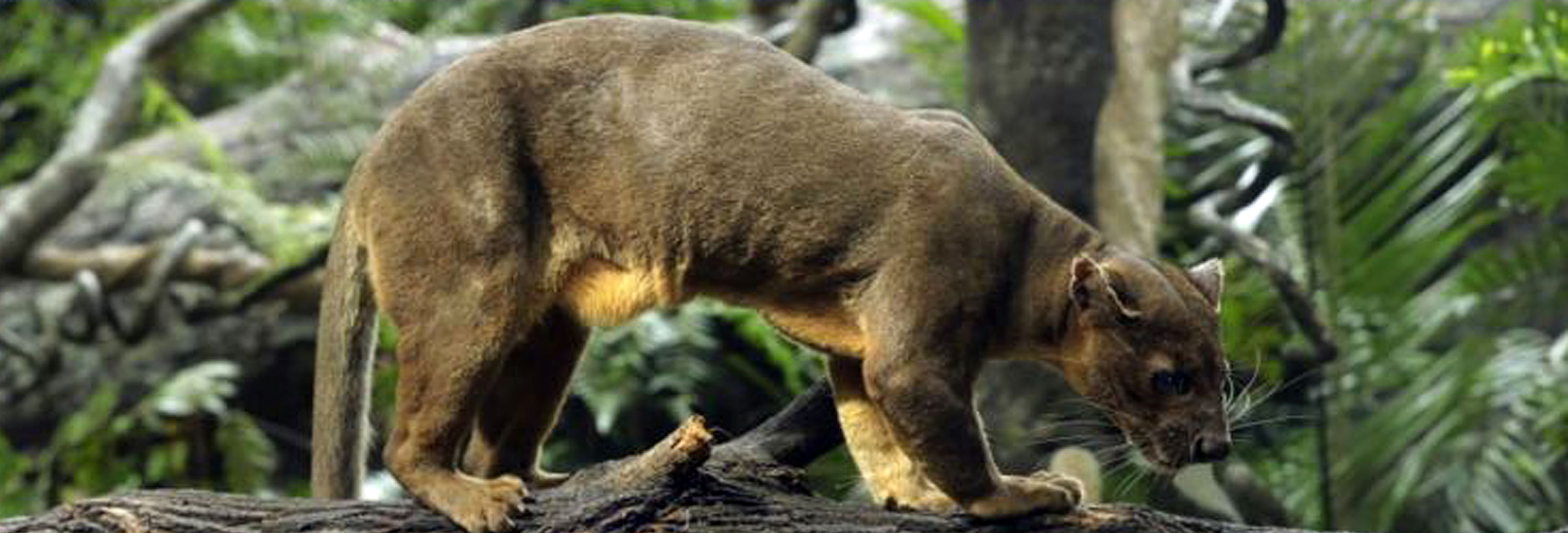The Singapore Zoo's latest exhibit features a pair of fossas (pronounced foo-sas), a creature related to the mongoose family found in Madagascar.
Fans of the animated movie of the same name may recognise the island's top predator, portrayed as the main antagonist, who was ruthless and not very bright.
In real life, however, the animal is intelligent, graceful and deserving of the title of top predator, with lemurs being its prey of choice.
A fossa has a cat-like head, short, dog-like muzzle and ears, a slender body and muscular limbs.
It is also the only animal whose adolescent females undergo a developmental stage known as transient masculinisation.
The zoo's fossas are nine-year-old male Varus and five-year-old female Kabibi, Wildlife Reserves Singapore (WRS) said last Friday.
The new exhibit has been open to visitors since an April 1 soft launch.

Solitary animals by nature, the pair will share the new exhibit in the zoo on a rotational basis, said WRS, the park operator.
Visitors will be able to watch daily interactive sessions between the fossas and their caretakers during medical conditioning sessions that are part of the animals' healthcare.
The fossa exhibit has features that aim to replicate the animals' natural habitat to improve their welfare and visitors' viewing experience.
The animals can manoeuvre around spring-loaded branches that sway under their weight, replicating the way natural branches behave.
This will also enhance the fossas' sense of balance and muscularity.
The two fossas were brought to the zoo under the recommendation of the European Endangered Species Programmes (EESP), a breeding programme by the European Association of Zoos and Aquariums, of which the Singapore Zoo is a member.
Varus was brought to the Singapore Zoo on May 25 last year, while Kabibi arrived on Sept 27 last year. They were quarantined for one month and were then moved to dens until their exhibit was completed.
Varus was born in Zoo Duisburg in Germany, while Kabibi was born in the Reserve Zoologique de Calviac in France.
Under the EESP, there are plans for the fossas in the Singapore Zoo to breed.
The fossa is classified as a vulnerable species in the International Union for the Conservation of Nature's Red List of Threatened Species, as it is under threat due to habitat loss and hunting.

